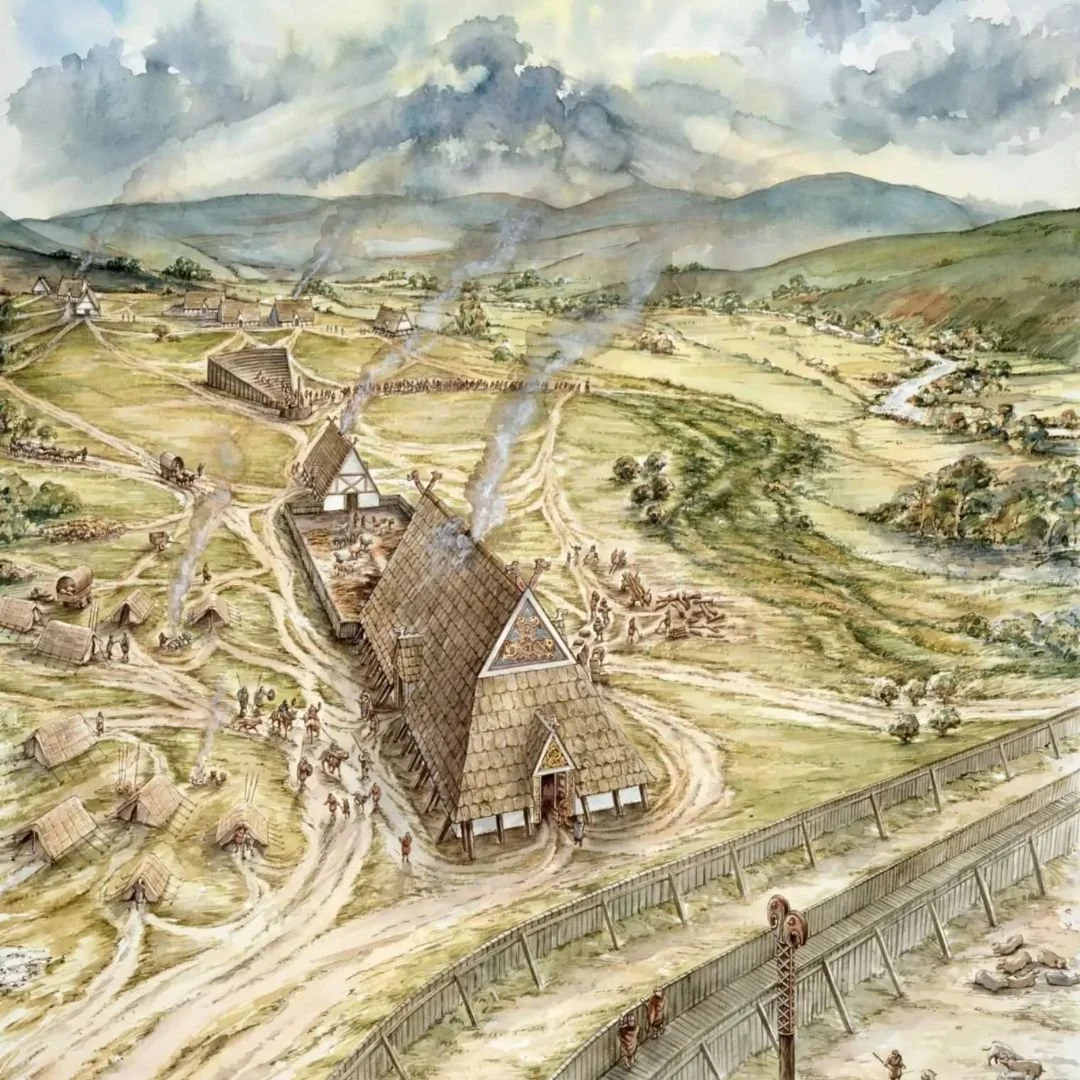The Montem Mound, Slough: 1,500 Year Old Saxon Monument
Archaeologists have discovered that a 20-foot high mound in Slough, long believed to be a Norman castle motte, is actually a rare Saxon monument built 1,500 years ago.
According to researchers from the University of Reading, Montem Mound in Berkshire, now encircled by municipal buildings, dates back to the same period as the renowned burial mounds of Sutton Hoo in Suffolk.
Analysis by radio-carbon dating determined that the mound was created during a time period spanning from 450 to 700 AD.
It likely marks the grave of a person of high status and may contain valuable artefacts.
King George III and Queen Charlotte attending the “Ad Montem”, 1778
This remarkable discovery, dubbed the "Sutton Hoo of Slough," is significant as only a few mounds from this era have been identified.
The findings challenge the previous belief that the mound was part of a Norman Conquest-era motte-and-bailey castle.
The mound is designated as a Scheduled Ancient Monument, offering it legal protection from development.
Archaeological investigations at the site were conducted with the approval of Historic England and consent from the Secretary of State.
Slough Borough Council manages the mound as a historical feature within its parks and open spaces services.
Slough
The Council is also developing an improvement plan, which will include an interpretation board to help the public appreciate the significance and history of this unique green mound.
A burial mound, also known as a barrow, is an ancient earthwork structure built over a grave or series of graves.
Burial mounds were used to honour and bury the dead, often individuals of high status or importance, such as tribal leaders or warriors.
The body might be interred with grave goods like pottery, tools, jewellery, or weapons, which were believed to accompany the deceased in the afterlife.
In recent centuries, the mound was used for Eton College’s ‘Montem’ ceremony.
Anglo Saxon England
The ceremony was held annually from the founding of Eton College in the 16th century until the late 18th century, after which time the event was held triennially until it was abolished in 1847.
The Montem festivities took various forms over the centuries, always involving a procession to the mound of school boys in fancy or military dress, and the collection and giving of ‘salt’ and money from visitors and passers-by.
In a press release, Dr Jim Leary, who led the investigation, said: “This is a time of heroic myth and legend where archaeology fills the gaps of the historic record.
“We tested material from all through the mound, so we are confident it dates to the Saxon period. Given the dates of the mound, its size and dimensions, and the proximity to the known richly-furnished Saxon barrow at Taplow, it seems most likely Montem Mound is a prestigious Saxon burial mound.”
The archaeologist described the importance of the find: “This discovery will add so much more to our understanding of the people who lived in Britain at this time.”
He added: “It will also extend our knowledge of the history of Slough.”
If you enjoyed this blog post, please follow Exploring GB on Facebook for daily travel, content and information.
Don’t forget to check out our latest blog posts below!
Thank you for visiting Exploring GB.








